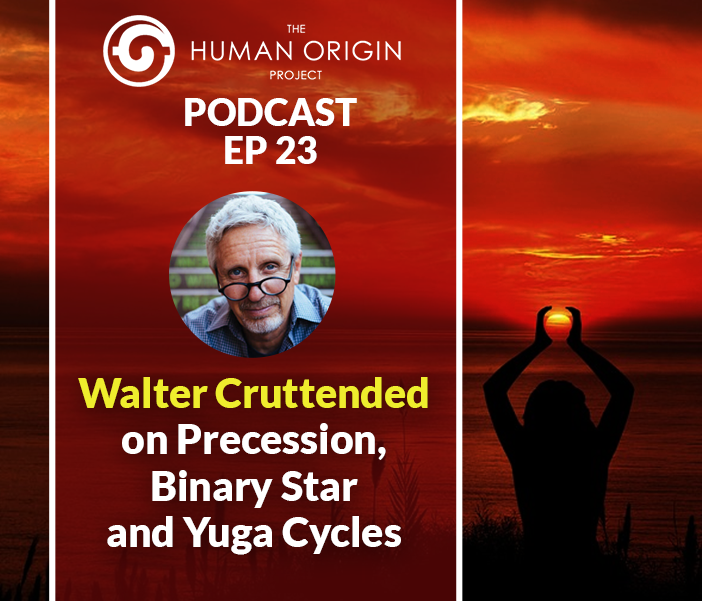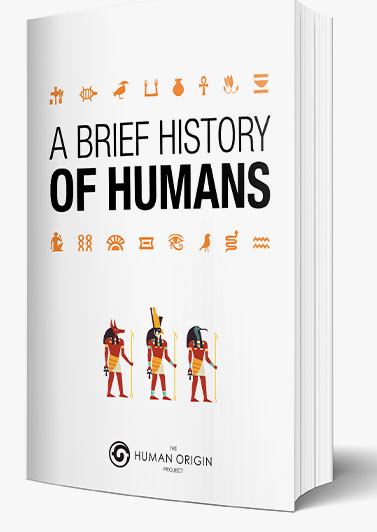In the last few decades, medical researchers made vast progress in understanding how complex the human body is. For years, the focus for healthcare was on the intervention of a silver bullet. Most commonly it was seen as a drug or surgery as the best way of healing disease.
These are effective approaches for acute diseases like infection or injury. However, medicine is less effective when improving the health of those with chronic illness.
Today, new research and a multi-disciplinary approach to healing the body and mind are showing great results. It appreciates the complex nature of our body with the gut-brain connection, the human microbiome, and epigenetics.
Healing meditation, and the field of mindfulness now has exciting application for many conditions.
It is part of a new generation of lifestyle medicine, that appreciates the process of allowing the body to heal.
Healing meditation at a glance:
- What is healing meditation? Also known as mindfulness practice, it’s an exercise of focus and mental relaxation. Its origins are from the ancient Indian tradition. Today it is now supported by modern research.
- What can it heal? Healing meditation has shown promising results for chronic conditions like anxiety, depression, chronic pain, sleep, and digestive disorders.
- How do you meditate? An easy 6-step 20-minute exercise per day has been designed by a Harvard Professor. If you want the exercise, skip straight to the bottom of the page.
What is mindfulness and meditation?
The term mindfulness is the application of a technique used for thousands of years. Also known as transcendental meditation, it originated in the Vedic tradition of India. It’s strongly linked with the Yoga system and has roots with Ayurvedic medicine. Meditation has principles in Tai Chi, Qigong, relaxation response, and breath regulation.
In philosophy, transcendence relates to the primary meaning of ‘climbing or going beyond.’ Its interpretation has seen it applied in many ways. Recently, meditation climbed to popularity through The Maharishi Yogi in the 50s and 60s. He taught thousands of people during a series of world tours, expressing his teachings in spiritual and religious terms.
For a long time, mediation was confused with the solving all of life’s problems. In Ashtanga Yoga, it’s described as the ability to experience a settled mind or ‘Samadhi.’ This is a small aspect of meditation practice, and many don’t achieve this with simple daily practice. The misconception left meditation on the fringes for a long time.
Recently meditation has been rebirthed with quick and straightforward practice shown to have profound health benefits.
Mindfulness practice can be simply described as noticing what happens moment to moment in life. From the easy and the difficult to the painful and the joyful. It’s like building a muscle to be present and awake in your life.
Does meditation help with healing?
The mechanism of healing meditation has been debated and studied by scientists. It’s not exactly understood how meditation produces health benefits in the body.
We know the power of shifting a mindset has profound benefits. For example, the placebo effect has produced healing capabilities without the delivery of a drug or medicine. It merely delivered the belief that there was an intervention.
A study into the placebo effect used a test group to receive a pill with an active ingredient. The control group received a sugar pill. Both the control and test groups don’t know which pill they have. The placebo has been found to have a measured benefit to people who believe they have been treated in their mind. Yet they only received a sugar pill.
It’s a phenomenon that has long baffled researchers.
The brain is a remarkably complex organ, and meditation seems to have benefits in its healing capability.
What is the effect of meditation on the brain?
Neuroscience has begun to measure the benefits of meditation on the human brain. It’s the effect most frequently sought by people who undertake meditation practice. One study looked at brain activity with magnetic resonance (MR) taken before and after a meditation program.
Within an eight-week mindfulness program at the University of Massachusetts demonstrated this.
They found:
- The analysis of MR images found increased grey-matter density in the brain.
- In particular, they measured changes in the hippocampus, known to be important for learning and memory. The hippocampus is also associated with self-awareness, compassion, and introspection.
- Images also found a decrease in grey matter density in other parts of the brain.
- The amygdala, which plays a vital role in anxiety and stress had a decrease in grey matter.
What are the benefits of being mindful to the brain?
Studies have also looked at the long-term effect of healing meditation on the brain.
In 2012, a study using functional magnetic resonance imaging (fMRI) looked at longer-term effects of people who meditate over two months. A fMRI not only takes pictures of the brain but also records brain activity occurring during the scan.
The researchers studied changes when meditating as well as performing everyday tasks.
What did they find?
- The scans detected changes in the subjects’ brain activation in the amygdala.
- Changes in brain activity in subjects held steady even when they’re not meditating.
They concluded that meditation may induce learning that is not task-specific, but process-specific in the brain. This may result in enduring changes in mental function.
Healing Meditation for depression and anxiety
The strongest evidence for healing meditation is to heal anxiety and depression.
Multiple studies show that it could be an effective therapy and even cure depression or anxiety.
How does it work?
Long-term meditation could have long-term benefits on the performance and ability of the human brain.
In a study with Tibetan Buddhist monks, it was found that novice meditators showed a slight increase in gamma activity in the brain.
What did they find?
- Meditation may increase the number of gamma waves in the brain. These are the smallest types of energy in the brain. They are associated with ‘feelings of blessing.’
- The monks showed huge increases in gamma rays that were previously not seen before.
Other research has found long-term meditation and attention like training to increase in thickness and blood flow to the prefrontal cortex. An area associated with complex behavior, decision making, and shaping personality. A critical functional area of the brain in high performing individuals.
Can meditation help heal the body?
The benefits of healing meditation extend beyond the structure and function of the human brain.
It works like this:
- Since the 1970’s research has found that meditation changes the way the body works. Mindfulness induces a ‘hypo-metabolic’ state which is similar to hibernation. The benefits of achieving this state are that it helps to heal and prolong the life of the cells in the body. Oxygen consumption decreases, and the body enters a relaxed state.
- More recently, the understanding of the human gut microbiome has helped explain how this happens. The digestive system houses trillions of microbes, that manage the gut lining, and immune system. Stress is known to have a measurable effect on gut microbes. Meditation helps regulate the gut microbe stress response, reducing chronic inflammation states, and maintain a healthy gut-barrier function.
- The gut-microbiome not only shape the immune system but the expression of DNA and genes. Epigenetics works via leaving tags on genes that make them express more or less. Studies show that meditation has a downregulation of pro-inflammatory genes (RIPK2 & COX2) which regulate inflammation.
- The effects travel right through to the brain. These genes even were found to increase the response time of the brain to stress cortisol when challenged with speech and mental calculations in front of an audience.
Meditation and healing leaky gut
Intestinal permeability is linked to auto-immune, inflammatory digestive conditions, type II diabetes, and even Alzheimer’s disease.
When you reduce stress hormones like cortisol and epinephrine through rest and relaxation, eating mindfully, and meditation, these tight junctions can heal.
The gut microbiome releases the majority of the body’s neurotransmitters. Meditation helps regulate the stress response, thereby suppressing chronic inflammation states and maintaining a healthy gut-barrier function.
Meditation and healing IBD, IBS, and digestive disorder.
The gut-brain axis is a critical factor in healing chronic digestive disorder. Healing meditation for gut or digestive diseases is now supported by research.
Several studies have found that stress management techniques and other psychological interventions can help patients with irritable bowel syndrome. The results are confirmed at least in the short term. Evidence for inflammatory bowel disease is less apparent. Some studies have, however, suggested potential benefits and none have shown negatives.
Mediation can heal and reduce chronic inflammation.
Research has found that many chronic diseases are due to chronic inflammation. Chronic inflammation causes a set of genes to be activated in the body.
Leaky gut or intestinal permeability is linked to many digestive, auto-immune, and metabolic disorders are all associated with the presence of inflammation.
A group of researchers has shown that mindfulness can produce the opposite gene activation as inflammation.
Meditation to heal injuries
A 2006 study of the use of imagery by injured athletes in the injury recovery period.
They concluded that “the implementation of imagery alongside physical rehabilitation should enhance the rehabilitation experience and, therefore, facilitate the recovery rates of injured athletes.”
Meditation to reduce and heal chronic pain
The perception of pain is connected to the state of mind. In stressful situations, pain can be elevated. Studies show that meditation may help reduce the perception of pain.
One study that compared the fMRI of people with four days of mindfulness meditation training and others had not.
Meditating patients reported less sensitivity to pain. fMRI revealed increased activity in the brain centers known to control pain.
A study of 3,500 regular meditators in 3,500 people found decreased complaints of chronic pain.
In patients with terminal diseases, researchers found meditation may reduce chronic pain at the end of life.
Meditation to sleep better and reverse insomnia
Nearly half the population do or will struggle with insomnia or sleep disorders.
Meditation may help relax the body to prepare for sleep and reduce ‘runaway’ thoughts that may lead to insomnia.
- One study of 54 adults looked at meditation to heal chronic insomnia. They found healing meditation a viable treatment for the test group.
- Another study found participants who meditated fell asleep sooner and stayed asleep longer, compared to those who didn’t meditate.
Meditation to help maintain weight loss
Anxiety appears to be an impediment in people trying to lose weight.
Researchers found that meditation was effective in reducing anxiety at the phase of weight loss maintenance.
Meditation to reverse high blood pressure
High blood pressure can increase the risk of heart attack and strokes.
Meditation may help reverse high control blood pressure by relaxing the nerve signals that can produce tension in blood vessels.
A study of 996 volunteers found that when they meditated by concentrating on a “silent mantra” lowered blood pressure.
Meditation to prevent and reverse dementia and Alzheimer’s disease
Improvements in attention and clarity of thinking may help prevent age-related memory loss.
The research:
- A review found that multiple meditation styles increased attention, memory and mental quickness in older volunteers
- Mindfulness practice can at least partially improve memory loss in patients with dementia.
- It can also help control stress and improve coping in those caring for family members with dementia.
Meditation helps manage ADHD (Attention Deficit Hyperactivity Disorder)
In a study with 50 adult ADHD patients with mindfulness-based cognitive therapy.
They found:
- Reduced hyperactivity, reduced impulsivity and increased “act-with-awareness” skill, contributing to an overall improvement in inattention symptoms.
- Meditation applications in schools may a positive impact on learning outcomes and development.
Meditation to fight drug and alcohol addiction
Research has shown that meditation may help people learn to increase willpower and control emotions when healing addictive disorders.
One study looked at 19 recovering alcoholics. Those taught meditate found that participants who received the training got better at controlling their cravings and craving-related stress.
Meditation to reverse and beat eating disorders
Meditation may also help you control food cravings. A review of 14 studies found mindfulness meditation helped reduce emotional and binge eating.
For eating disorders, meditation has shown early promise in small studies in beating thought patterns.
Meditation as a therapy for post-traumatic stress disorder (PTSD)
Evidence supports the use of mindfulness in treating depression associated with PTSD. Mindfulness was compared to treatment as usual or psychoeducation and was shown to have a benefit in healing PTSD.
What are the steps to healing meditation?
People practice many different forms of meditation, most of which don’t require specialized equipment or space. You can practice with just a few minutes daily.
Firstly, try choosing a form of meditation based on what you want to get out of it.
What are different types of meditation?
There are two main types of meditation:
- Focused-attention meditation: Concentrates attention on a single object. It could be a thought, sound or picture. Try to rid your mind of attention and distraction. Meditation may focus on breathing, a mantra or a calming sound.
- Open-monitoring meditation: Encourages broadened awareness of all aspects of your environment, your train of thought and sense of self. It may include becoming aware of thoughts, feelings or impulses that you might usually try to suppress.
How long should I meditate for?
You can meditate for 5 minutes or 50 minutes. No set time will see certain benefits. You’ll need to find out what works for you.
As a guide, aim for 20 minutes.
Conclusion:
While more research is required to understand the clinical effectiveness fully, many studies now support it as a tool to help the healing process in the body.
This likely includes anxiety, inflammation and chronic stressors on the body that act as barriers to healing.
Mindfulness practice has been associated with very few negative effects.
6-step 20 minute daily Healing meditation (by a Harvard Professor)
- Sit quietly in a comfortable position.
- Close your eyes.
- Deeply relax all your muscles,
beginning at your feet and progressing up to your face.
Keep them relaxed. - Breathe through your nose. Put your tongue to the palate.
Become aware of your breathing. Breathe deep into your diaphragm
As you breathe out, say the word, “one”*,
silently to yourself. For example,
breathe in … out, “one”,- in .. out, “one”, etc.
Breathe easily and naturally. - Continue for 10 to 20 minutes.
You may open your eyes to check the time, but do not use an alarm.
When you finish, sit quietly for several minutes,
at first with your eyes closed and later with your eyes opened.
Do not stand up for a few minutes. - Do not worry about whether you are successful in achieving a deep level of relaxation.
Maintain a passive attitude and permit relaxation to occur at its own pace.
When distracting thoughts occur, try to ignore them by not dwelling upon them
and return to repeating “one.”
“With practice, the response should come with little effort. Practice the technique once or twice daily, but not within two hours after any meal, since the digestive processes seem to interfere with the elicitation of the Relaxation Response.”
Herbert Benson, M.D. Harvard Medical School
Common Questions about Healing Meditation:
How long should meditation last?
Remember it’s personal. 20 minutes is a good aim, however, if you can practice for 5 minutes and feel better, then continue with that.
What is the best time of day to meditate?
Try first thing in the morning or the last thing before bed time.
Is it bad to meditate at night?
No, it may be the best time when the body is preparing for sleep.
Is it good to meditate after a workout?
Yes, it may help integrate benefits of exercises.
How do you meditate in bed?
Find a comfortable position, either at the edge of the bed with feet flat on the floor. Sitting cross-legged, or lying flat. Whichever works for you. Start your meditation process.
Is meditation better than exercise?
It’s a kind of exercise, for the mind.
How should I sit while meditating?
Find a comfortable spot where you’re not distracted by being uncomfortable. Try to repeat this position as it may help form a muscle memory for meditation.
Can you meditate with your eyes open?
You can. It might be harder for beginners with distractions.
Can you meditate with music?
Yes, find a frequency that relaxes and gets you in a good mood. 852Hz is a good example.
What is a moving meditation?
It can be, practices like Tai Chi or Yoga incorporate mindfulness with movement.
Is it OK to lay down while meditating?
Yes. Some people may find that they fall asleep, see what works for you.
What should I be thinking when meditating?
Focus on your mantra, breath or a scenario in your mind.
Now it’s up to you.
How has your healing meditation practice changed your life? Any questions for more experienced meditators?
Leave your comments below.
References:
- https://www.sciencedirect.com/science/article/pii/S092549271000288X
- https://www.ncbi.nlm.nih.gov/pmc/articles/PMC3772979/
- https://www.ncbi.nlm.nih.gov/pubmed/20350028
- https://www.ncbi.nlm.nih.gov/pmc/articles/PMC3485650/
- https://www.ncbi.nlm.nih.gov/pmc/articles/PMC526201/
- https://www.frontiersin.org/articles/10.3389/fnsys.2014.00252/full
- https://www.physiology.org/doi/abs/10.1152/ajplegacy.1971.221.3.795
- https://www.frontiersin.org/articles/10.3389/fimmu.2017.00670/full


























